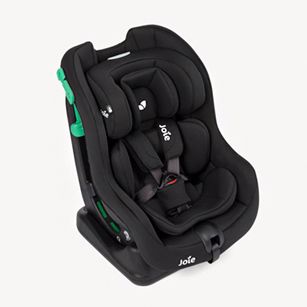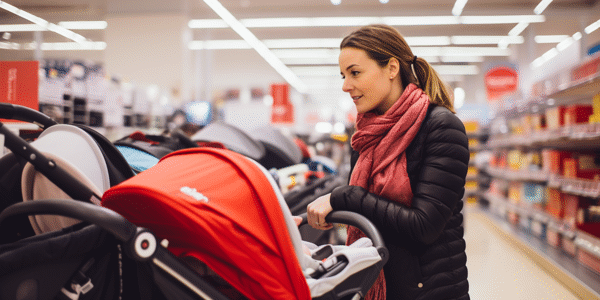With so many changes to car seat laws, it's difficult for parents to know when to upgrade their car seat and whether or not they need the new model. If you've been keeping up with car seat regulations in recent months, you might also have heard that the legislation surrounding them changed in September 2023.
While these changes to the regulations are usually pretty straightforward, Brexit means that the rules could well be different throughout the UK in the future. If you're on the hunt for a new car seat or expecting your little one and want to make sure you get the safest car seat out there, we've got you covered, thanks to the experts over at Joie. Here's everything you need to know about car seat rules and laws.
What is the ECE R129 Regulation?
As the new EU standard for car seat safety, set back in 2013, regulation ECE R129, was largely brought in to make parents' lives easier and make it more clear when children should be moved onto a new seat or facing a different direction.
Since the EU brought in ECE R129, it has been in place alongside the existing ECE R44, and car seats have been able to be manufactured and sold, provided that they pass either of the two safety standards. R129 compatible seats allow parents to choose their child's seat and position based on their height rather than weight. This makes things easier for parents to establish the right seat setting and is the best way to ensure that children are always in the right seat for the correct length of time.
R129 seats are often known as i-size seats, but it's important to remember that i-size is an enhancement of R129. All i-size car seats are R129 approved, but not all R129 seats are i-size.
What's the ECE R44 Regulation?
Alternatively, R44 compatible car seats are separated into 4 groups by weight rather than height, as below:
- 0+ (birth to 13 kg)
- 1 (9 to 18 kg)
- 2 (15 - 25kg)
- 3 (22 - 36kg)
While most i-Size car seats only use ISOFIX anchor points, there are R129 and R44 car seats available that can be fitted using your car's seat belt, which makes it easier for parents whose car doesn't allow for an ISOFIX anchor point to be used.
What Changed in September 2023?
From 1st September 2023, ECE R129 became the sole standard approved by authorities. This means that EU and UK authorities will no longer accept R44 approvals, except for built-in boosters.
Exactly one year after this end to the manufacturing of R44 car seats, on September 1, 2024, R44 car seats can no longer be sold in retail, on marketplaces, or in an eCommerce capacity in the EU or UK. This means that ECE R44 car seats manufactured before September 1, 2023, will continue to be available until September 1, 2024.
Can I Still buy an R44 Car Seat After September 2023 in England, Wales and Scotland?
With Great Britain leaving the EU, there is no set mandate for these EU rules to be mirrored. As of now R44 seats will continue to be available for purchase after September 1, 2023 but there has been no announcement on a timeline.
Can I Still Use an R44 Car Seat After September 2023?
Yes. As mentioned, the new rules apply only to the manufacturing and sale of new R44 car seats at this point. In September 2024, you won't be able to purchase R44 car seats, but there's still no set plans to ban their use.
This means that even if you live in Great Britain or plan to go on holiday in the EU, you'll still be able to legally use your R44 car seat for the foreseeable future in both areas.
Are R44 Car Seats Safe to Use?
It's important to note that even though this marks the end of the sale of R44 car seats, there is no planned ban on the use of R44 car seats, and these seats are still safe and reliable to use. R44 car seats go through rigorous testing, and when the weight guidelines are properly followed are still safe to use.
The main difference in the R129 seat testing process compared to the R44 is that the R129 testing includes additional requirements for side impact protection.
Overall, the type of car seat you choose depends on your child's age and individual needs. If you are looking for a new car seat to last your little one a good few years, the best option might be to go for an R129 seat, so you're prepared for any changes in the next few years.
Still, if you're currently using an R44 car seat that works well for your baby or toddler, and you're ensuring to use it properly and strictly stick to the weight guidelines, there's no need to think about changing this seat right away, and it's still perfectly safe and reliable. For more information on choosing the safest car seat, check out Your Baby Club's guide to car seat safety.

Joie i-Snug 2i-Size car seat for birth to 12 months |
|
The i-Snug 2's deluxe cushioning makes your little one feel like you're in the back with a big warm hug! |
| Full Details |

Joie i-Spin 360™i-Size Spinning car seat for birth to 4 years |
|
This one is perfect for getting your newborn in and out of the car seamlessly. The 360° rotation will make every trip that little bit easier! |
| Full Details |

Joie Steadi™ R129Car seat for birth to 4 years |
|
With one rear facing position and three forward facing positions, this seat has padded infant head and body support cradles the tiniest riders as they transition from tiny to toddler. |
| Full Details |

Joie i-Plenti™i-Size car seat for 15 months to 12 years |
|
With a removable lower body insert, create a custom fit with this booster seat to ensure both the harness and buckle are properly fitted to your child. |
| Full Details |





